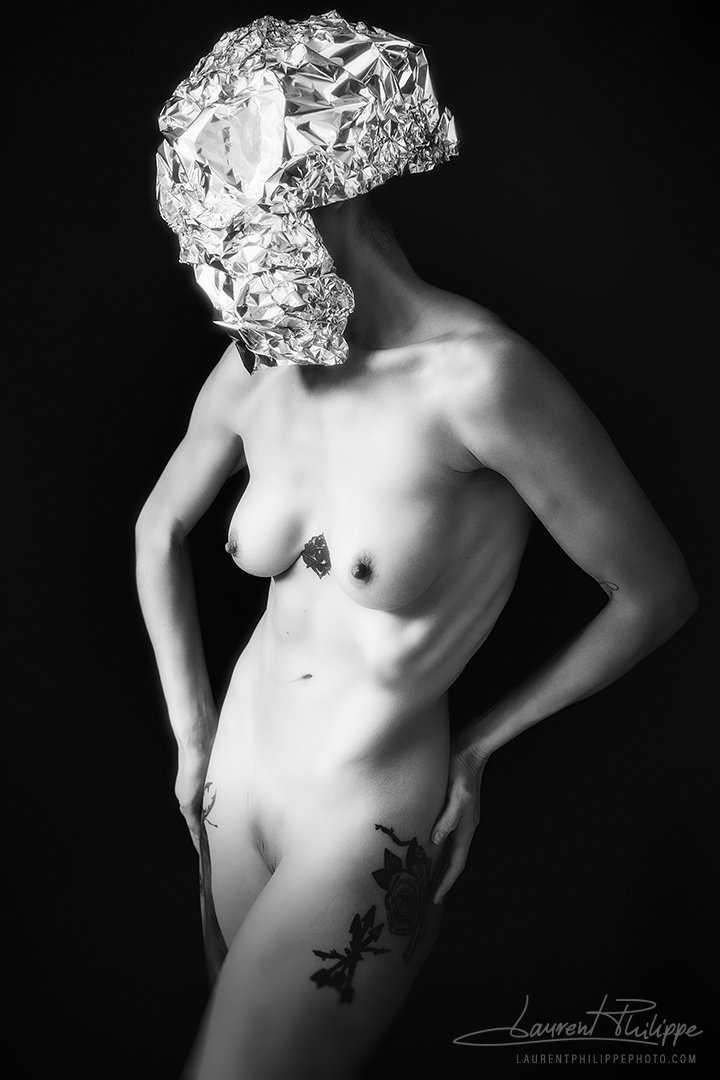“Tinfoil Head”
Tinfoil Head plays with identity by covering it completely. The face—our most practiced surface—is erased, replaced by sculpted foil. A mask that reflects everything and reveals nothing. And in that concealment, something unexpected happens: freedom. With no need to perform, the body moves differently. Poses become stranger, bolder, truer. There’s a surreal kind of honesty in hiding.
This series explores how anonymity can unlock expression, and how transformation begins not with what we show—but with what we’re allowed to let go of. The foil isn’t just a shield. It’s a tool, a metaphor, a permission.
Scroll through the images below, and if you’d like to go deeper into the thoughts behind the work, you’ll find a fuller reflection at the bottom of the page.
C., 2023
S., 2023
E., 2023
S., 2024
D., 2023
M., 2023
Tinfoil Head – Extended Reflection
We recognize each other through the face. It’s where we expect meaning to live—expression, emotion, identity. It’s also where we learn to perform, to shield, to shape ourselves into something acceptable. What happens when we remove it altogether?
In Tinfoil Head, identity is masked by a shell of sculpted foil—reflective, faceless, and strange. The person underneath disappears, and with them, the familiar cues we’re trained to read. What emerges instead is something looser, less filtered. The moment the face is hidden, the body begins to move differently. There’s a shift in posture, a willingness to take up space. Freed from being recognized, people become more recognisable in other ways.
The foil becomes more than just a mask—it becomes a collaborator. It folds and bends, catches light, echoes movement. In each image, it takes on a new shape, sculpted not just by hands, but by intention. It conceals, but it also amplifies. Some forms look playful. Some alien. Some powerful. But all of them exist in a space between protection and exposure.
There’s a subtle link to cultural mythology too—tinfoil hats as symbols of paranoia, surveillance, or shielding from unseen influence. But here, that reference becomes poetic rather than literal. The mask isn’t used to block the outside world, but to let something inside emerge without fear of being seen too clearly.
Tinfoil Head is not about hiding. It’s about what happens when we’re no longer expected to present a self. It asks how much of our identity lives in the face—and how much is quietly waiting underneath, ready to move once the gaze shifts elsewhere.
A first selection from the series was exhibited in 2024 at Bianco & Nero Expo in Hasselt.






